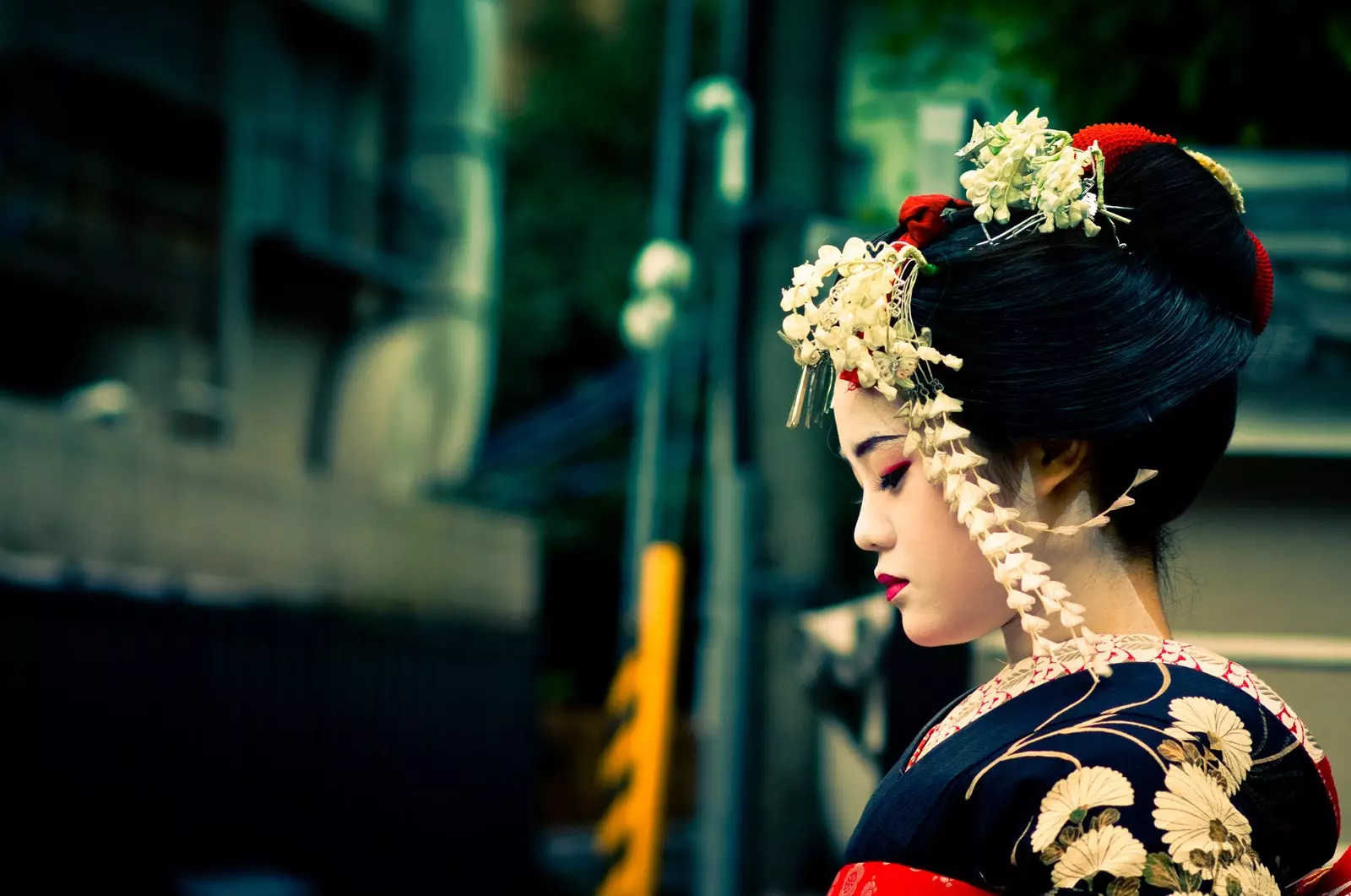
Portrait of a geisha taken on the streets of Gion, Kyoto's historic district.
You are walking through the streets of the colonial city of Cartagena de Indias, in Colombia. You have already taken pictures of the Clock Tower and the bohemian neighborhood of Getsemaní. From Playa Blanca and a city that from any rooftop offers the best panorama. But you still lack a goal. And it will be there, walking through the old town, when you see it: a famous palenquera woman with a colorful dress and a basket of tropical fruits on her head. On occasion, she will come to you. Other times, you will be the one who approaches to say "Can I take a picture of you?"
At the date of creation of this article, the hashtag #palenqueras reaches 11,467 tags on Instagram (and the occasional meme on TikTok). One more example of that tendency to immortalize local people as a reflection of a culture, be it Colombian, Flemish or Indian under a Valencia filter.
Arguable or not, this situation continues to raise many questions. Because, would we like a Chinese tourist to take a picture of us on the way to work next to La Moncloa? With our swimsuit on the beaches of Benidorm? Are exotic countries more willing to pose in front of the lens?
The debate is broad and the interactions increasingly varied. However, empathy for the history of palenqueras or geishas should always endure. For all those women we once immortalized on our travels.
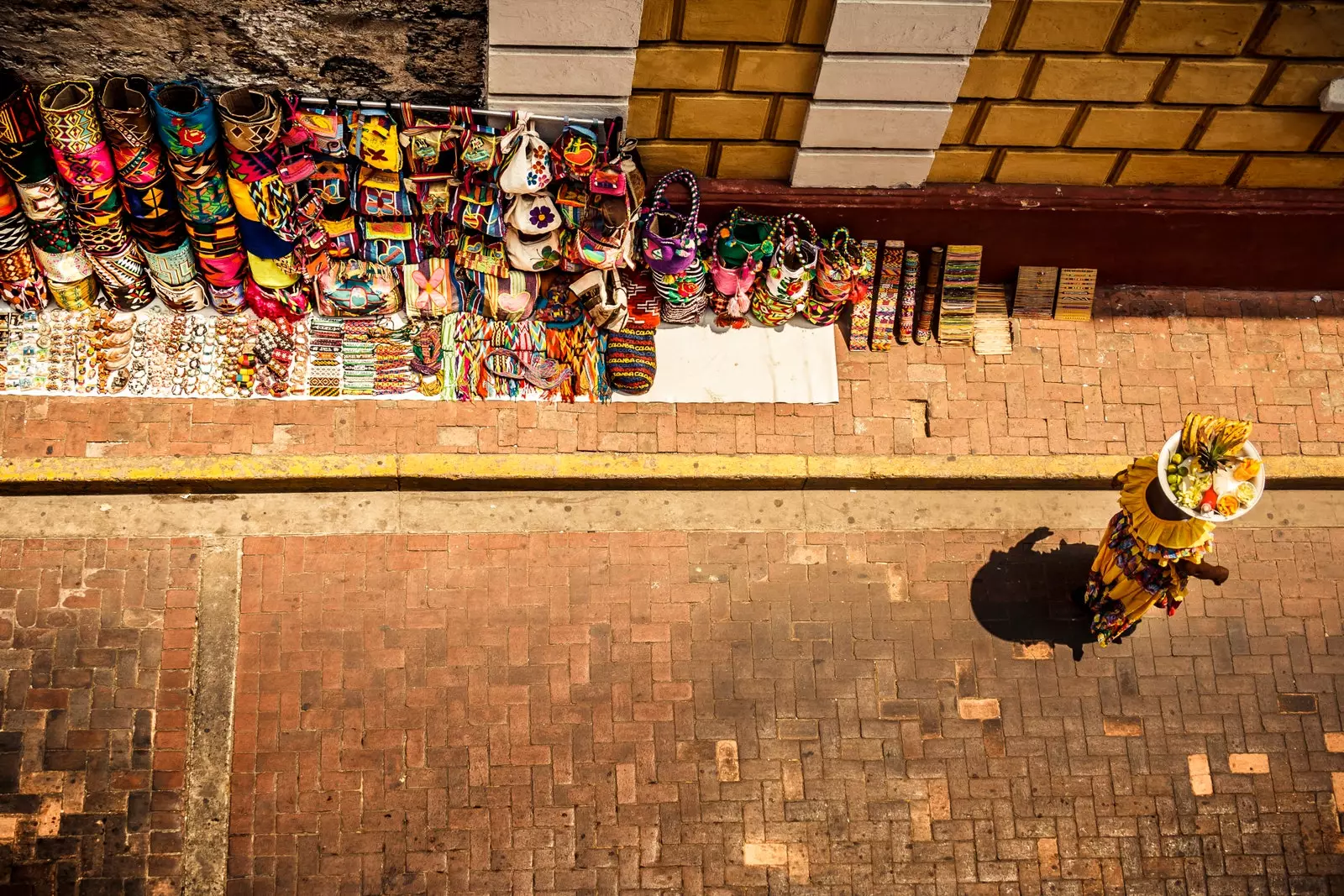
Photo 'stolen' from a palenquera in one of the alleys of Cartagena de Indias.
PALENQUERA
Dressed in a vibrant skirt in the colors of her flag, the palenquera is the symbol of the city of Cartagena de Indias, in the Colombian Caribbean. Icon that carries guavas and bananas on its head, welcoming the visitor with a centuries-old smile.
In fact, it is possible to go back to the 18th century to know the origin of these women belonging to the first people of free slaves in America: San Basilio de Palenque, located three hours from Cartagena. A melting pot of cultures, dances and unique color born from the rebellion of the maroons (or rebellious slaves) who challenged Spanish domination after their arrival from Africa.
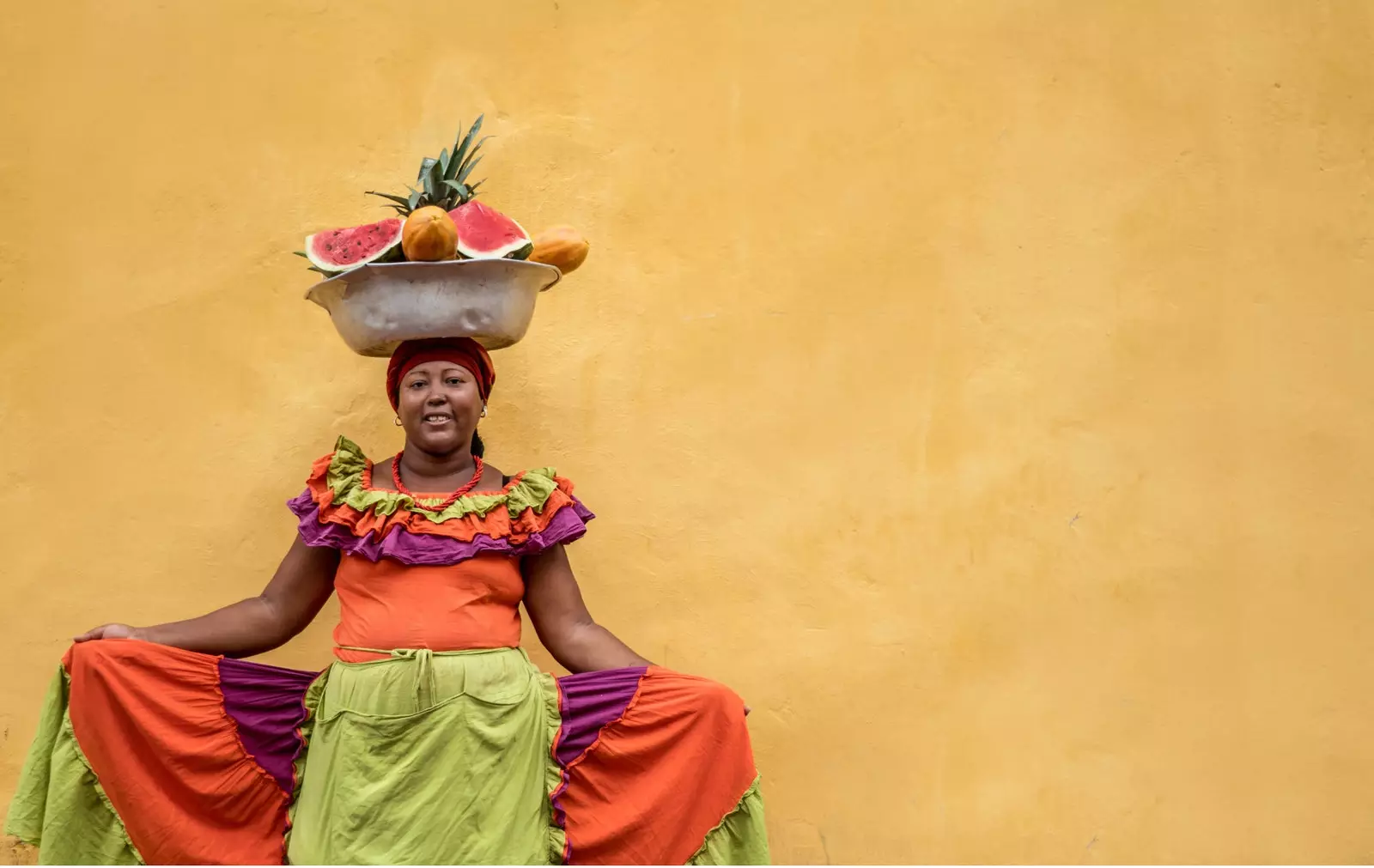
Palenquera in the city of Cartagena de Indias, Colombia.
GEISHA
From Colombia, we go around the world until we reach Japan. Specifically, to the city of Kyoto, where more than one visitor has gone out in search of those elusive women with kimonos and combs called geishas.
A symbol of ancient Japan, geishas were born in the hanamachis (or auspicious neighborhoods) as artists focused on party entertainment during the 18th century, a time when the absence of courtesans increased the demand for these muses of exotic leisure. Years later, the geisha still evokes that oriental hermeticism limiting itself to offering a unique mastery of the arts. And hopefully, some other photo.
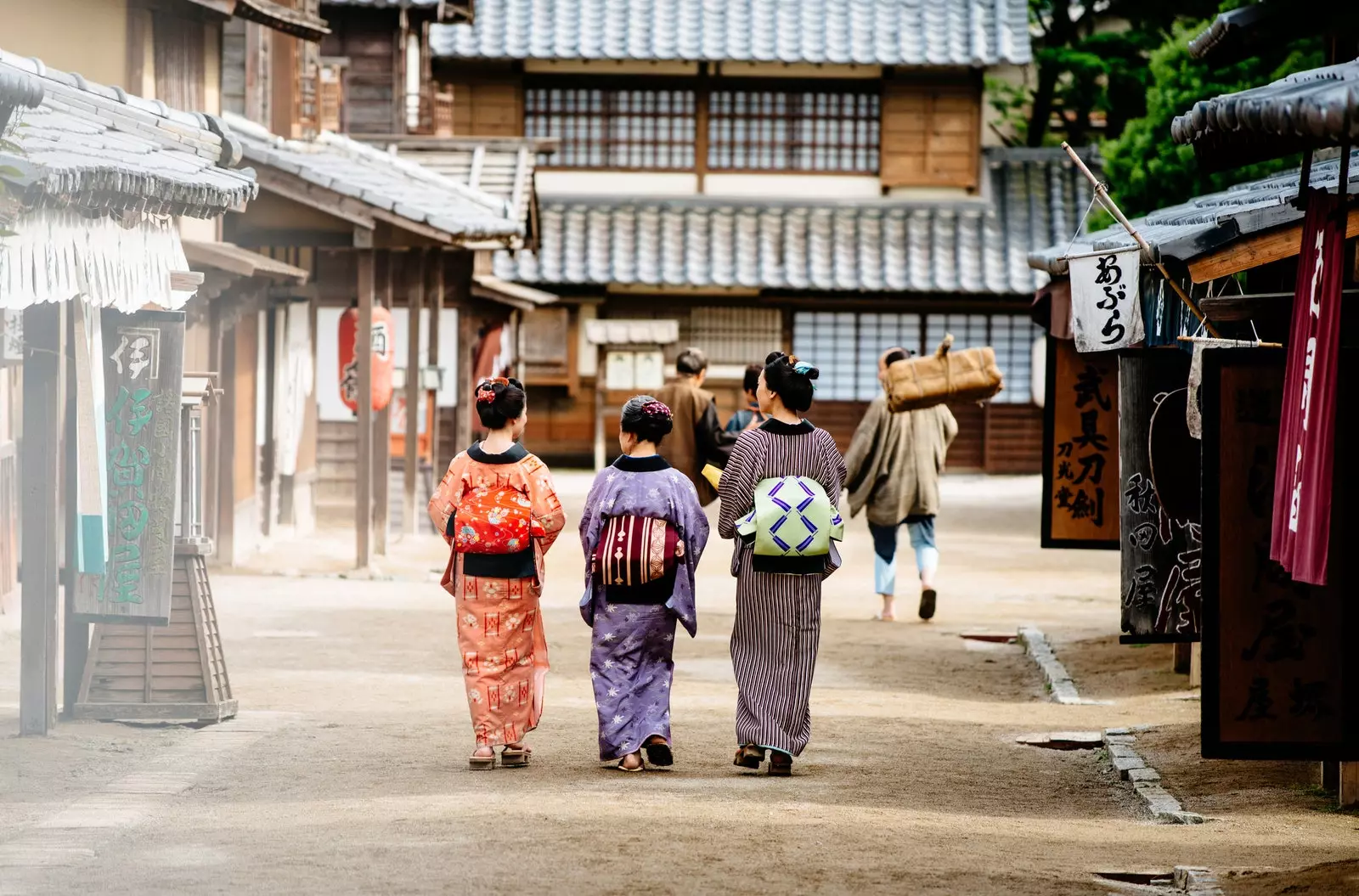
Geishas walking through a traditional village in Japan.
PADAUNG WOMAN
In 1975, the iron dictatorship of Burma led the Kayan ethnic group to flee the Asian country to cross the borders and take refuge in the north of neighboring Thailand. Upon arrival, the Thai authorities forced them to remain there, until a tourist discovered the Padaung women, also known as 'giraffe women'.
famous for wear numerous rings around the neck that cause an exaggerated extension of it, these women live in a town not far from Chiang Mai where they are dedicated to weaving fabrics and posing for visitors. A controversial situation to say the least, especially when They all live in a village surrounded by fences and preceded by a ticket office. The result of a Thai government that, seeing the benefits produced by its most illustrious refugees, decided to exchange asylum for tourist tickets.
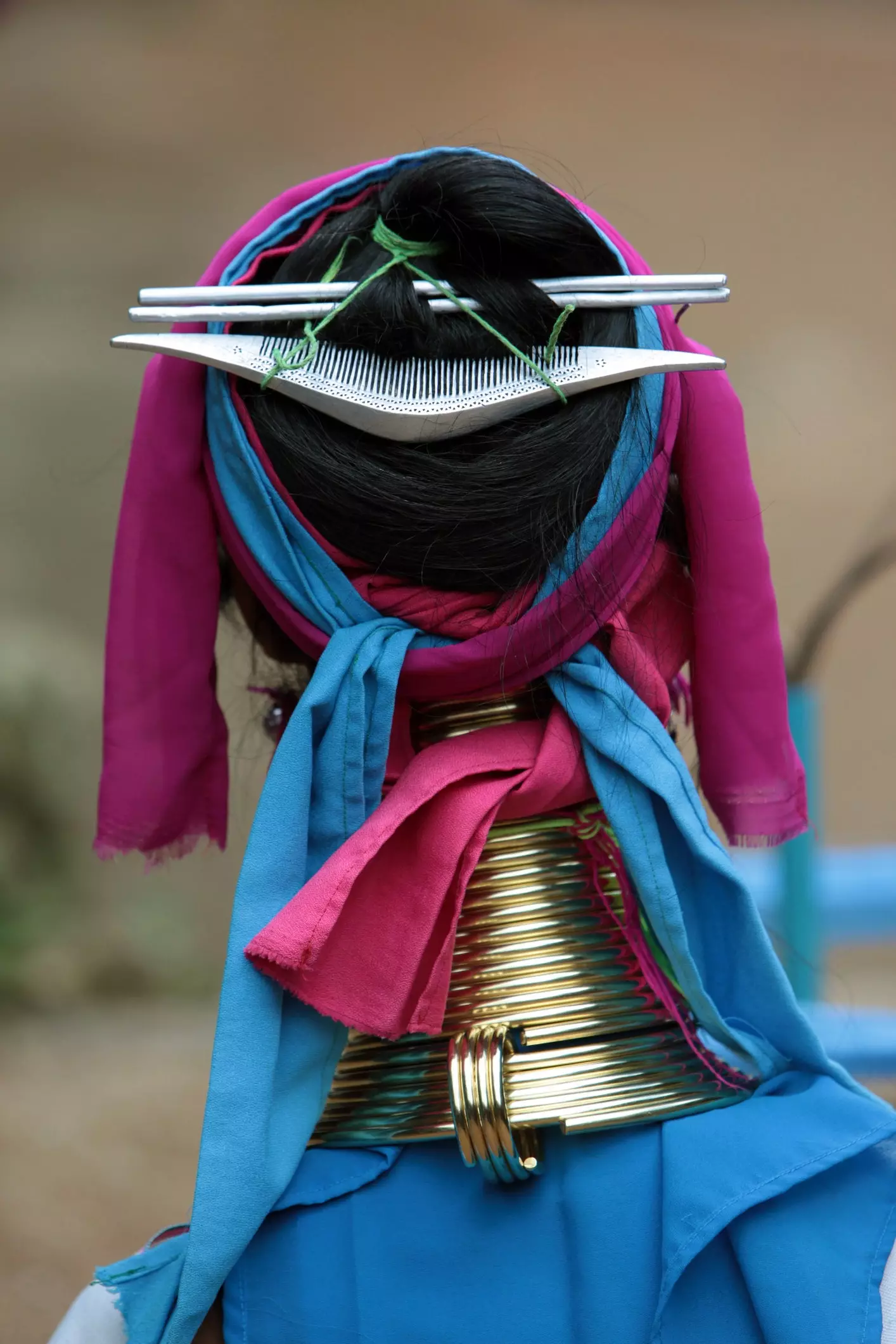
Padaung women wear neck rings that cause neck extension.
NDBELE
During the time of bloody apartheid in South Africa, different tribes such as the Ndebele were isolated in the north of the country. In order to communicate in dangerous situations, they used color on the walls of their huts: red, for alerts; green, to celebrate the joy that the end of a war meant.
From this watercolor of terror, Curious geometric designs were born that today shine in towns like Siyabuswa, in Mpumalanga province. The same ones that owe part of their projection to the local Esther Mahlangu.
The architect of a first Ndebele design for the BMW car in 1989, Mahlangu took these drawings beyond his borders, turning them into reason for numerous fashion campaigns and artistic events worldwide. In fact, you may have a Ndebele shirt in your closet and not even know it.
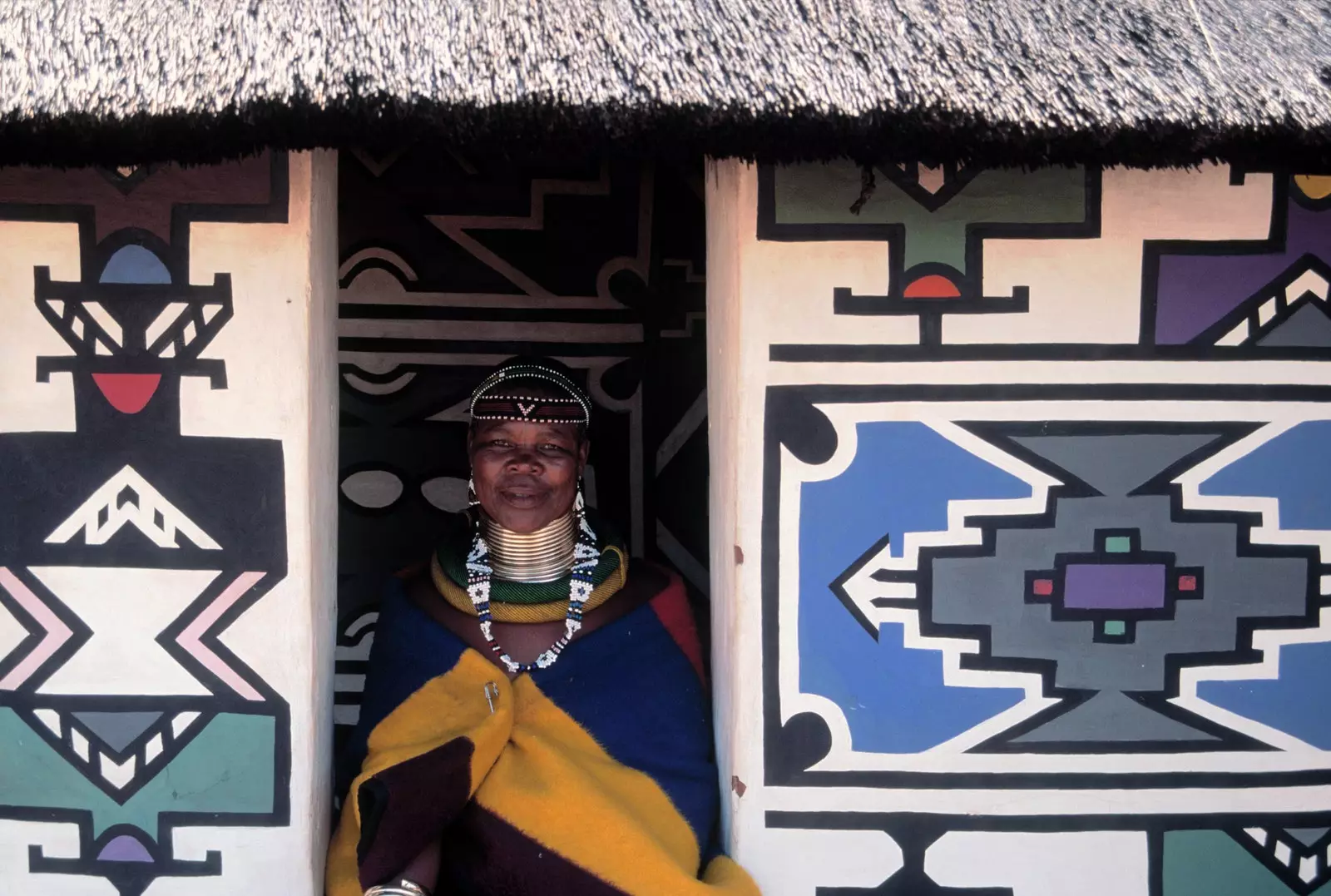
Married Ndebele women wear heavy bronze foot and neck rings to show their wealth.
INDIAN WOMAN NEXT TO THE GANGES
Colorful saree. A bindi (or third eye) tattooed on the forehead. Spirituality and mystery. A look that contains stories of a thousand gods and incense. Indian women have been nurturing our concept of a mystical India for years where, in reality, up to 645 different ethnic groups coexist.
However, it is in the holy city of Varanasi where we find the most popular example: that of the pilgrim who comes here to bathe in the waters of a river Ganges as dirty as lit by candles and promises. Although the stories of her are not so vitalistic. Because especially in rural areas, **being born female is still a curse in India. **
The dowry (or exchange of a daughter to the family of her future husband in exchange for a large sum of money), the threat of rape (more than 33,000 cases registered in 2017) or constant harassment make the 'daughters of Shiva' into some of the most vulnerable on the planet. Although his smile is able to erase all suspicions.
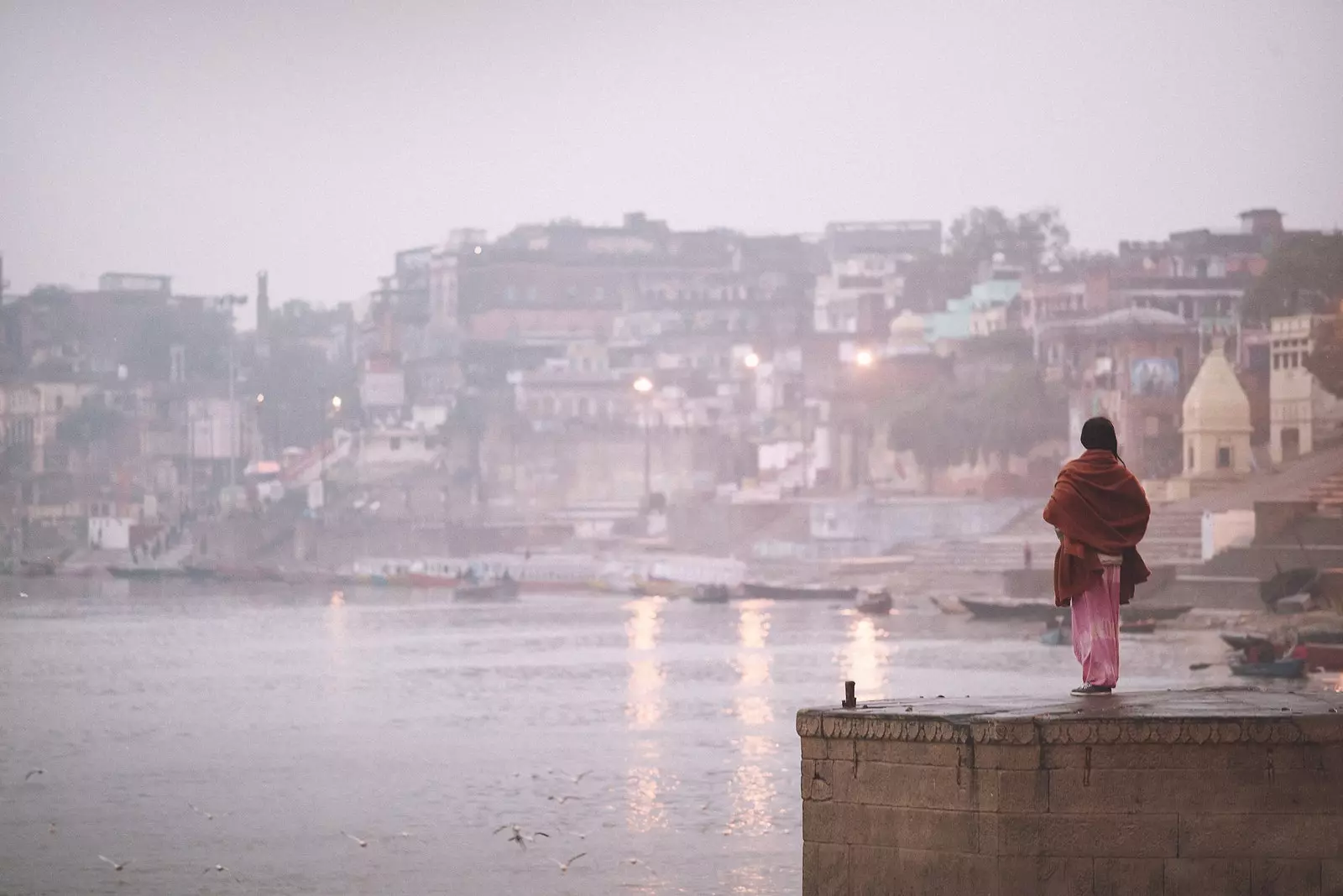
Indian woman by the Ganges river in the city of Varanasi.
WOMAN WITH AYABA FROM SAUDI ARABIA
in Saudi Arabia, a woman cannot talk to an unknown man. She also doesn't try on clothes in a store or go outside without the company of her husband (or cousin, or uncle, or even neighbor). And of course, without forgetting a black ayaba that covers her body and part of her face, that here the colors can mislead the attention.
Far from the objective of any tourist (or not, for the most reckless), Arab women, and especially those who live in Saudi Arabia, continue to be one of the bloodiest examples of female reality in the world.
Women of 'old rights' (divorce, for example, is today limited to a notification via SMS by the husband who wants to separate), Saudi women have just released their right to drive and vote. The tip of an iceberg still covered by a long veil.
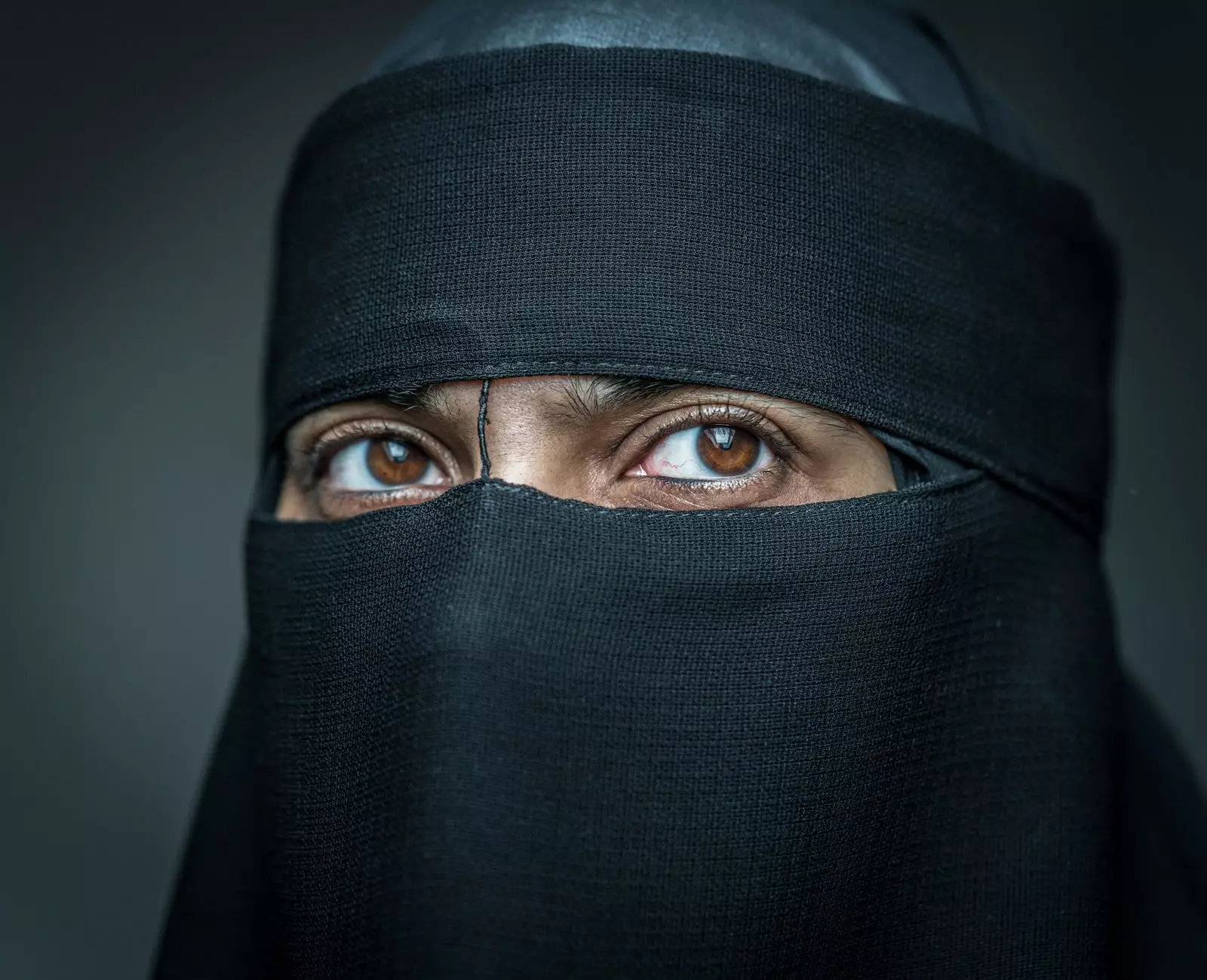
Some eyes say more than a thousand colors.
THE VIETNAMESE WOMAN FROM THAT RICE PIECE
In the middle of the infinite green of the Mekong delta, a conical cap known as 'nón lá' stands out. Shortly after, a farmer woman emerges. You ask her for a photo of her and she answers, but behind those rice eyes, there is much more.
Proud and strong, Vietnamese women went from being captives in their marriages during medieval times to leading spy villages during the Vietnam War. Today, they represent 73% of the country's employment, although there are still other rights to be conquered.
However, if you visit places like the town of Hoi An, more than a friendly local carrying her fruit basket he won't hesitate to smile at any target. Of course, with a ticket in between.
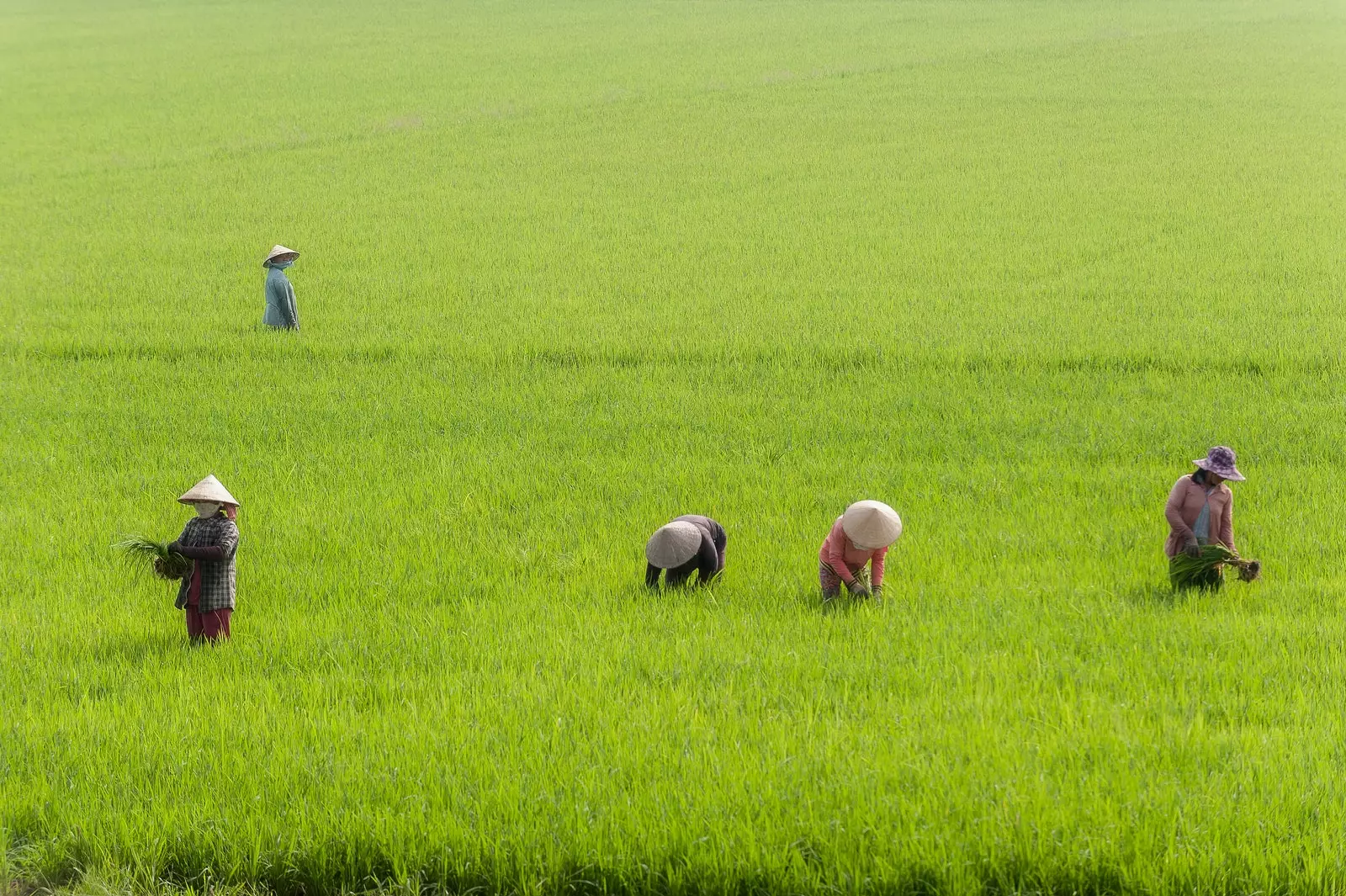
Vietnamese women working in a rice paddy.
QUECHUA
Arriving in Cuzco, in Peru, a native woman dressed in a colorful poncho she approaches. If she can, she will arrive with a baby wrapped on her back or even the first alpaca she finds. Only then will the tourist be able to take the perfect photo of her.
Daughters of Mother Earth (the famous Pachamama), The descendants of the ancient Inca empire were divided into those who were more homelike and those who fought in their own wars. Centuries later, they continue to farm the land and sell textiles throughout Peru, aware of their appeal to foreigners.
In fact, the Quechua women who precede the arrival at Machu Picchu are experts in posing for a photograph for which they will not hesitate to extend their hand: “A sun”, they will tell you. The response to a reality in which taking a clandestine photograph has become a new tourist barter.
The question is: "Is it ethical to encourage this practice?" Or rather: "Is it good to do it?" Questions that involve such a wide diversity, as worthy of mention. But especially, reflection.
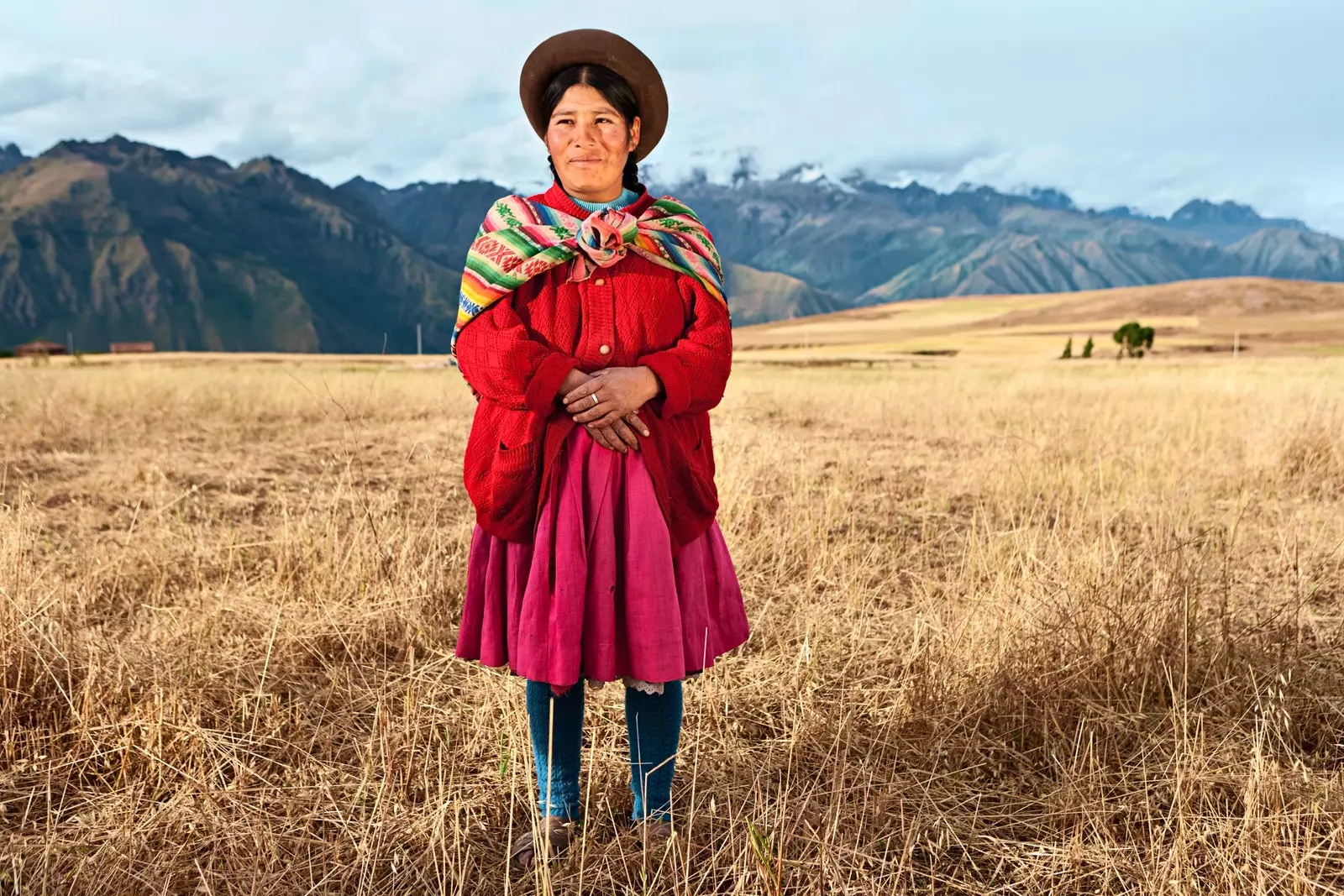
Woman in traditional dress in the Sacred Valley of the Incas, Peru.
